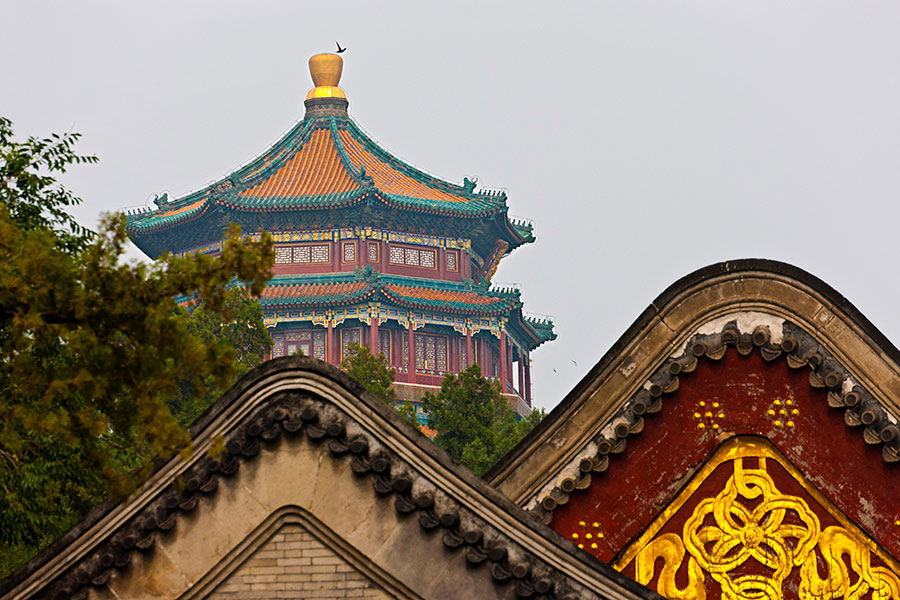Chapters in China’s Long History
A multi-authored and beautifully illustrated volume endeavours to find detailed answers to complex questions about modern Chinese history.

Exuberant celebrations took place across China in 1959 to mark the 10th anniversary of the founding of the People’s Republic. Of particular national pride were the ‘Ten Great Buildings’ in the capital of Beijing, newly constructed to set in stone for eternity the Communist Party’s accomplishments in its first decade of rule. One of the ten was a large museum building located at the new Tian’anmen Square and facing the new National People’s Congress. It united, under one roof, the Museum of the Chinese Revolution and the Museum of Chinese History. Today it is known as the National Museum of China.
In hundreds of objects and sprawling exhibition spaces, the museum tells the story of ‘5,000 years of Chinese civilisation’. It suggests clear answers to complex questions: what was China at different times? How do we write Chinese history? When was modern China born? The museum itself has become part of the creation of that ‘5,000 years of Chinese civilisation’. One of the most politically potent and enduring phrases, it is equally popular in China and abroad, even though, or perhaps because, it obscures more than it explains.
By contrast, all the authors Jeffrey Wasserstrom has assembled in this new history of modern China offer detailed answers to these complex questions. What is more, their answers are accessible and enjoyable. In 13 chapters, they illustrate that complexity beyond political simplifications is not only desirable but necessary if we are to make sense of China’s history and the role of history in China today. They bring recent findings and analytical shifts within the academic field of Chinese history to a wider audience and make it easy for the reader to want to turn to the next page.
Deciding where to start is one of the challenges of writing modern Chinese history. Many histories have looked to the first Opium War (1839-42), or to the intensification of trade contacts with European powers in the late 18th century. Their attention is squarely on the Qing dynasty. Yet the first chapter in Wasserstrom’s volume takes us further back in time. It links the Ming dynasty (1368-1644) and the Manchu Qing dynasty’s rise to power (1644-1911). Shifts in everyday social customs, trading patterns, political structures, and interactions with foreigners continued across the Ming-Qing transition. From there, the volume moves on to the opium trade and the popular uprisings of the mid-19th century. The Taiping Rebellion features centrally: a civil war that split the country, caused havoc across provinces and seriously destabilised Qing rule.
Like the contemporaneous civil war in North America, the Taiping Rebellion was a major turning point in modern Chinese history, yet its events are not nearly as well known. The 1911 revolution, by contrast, is much more familiar, yet here, too, the narrative compels us to see continuities across watershed dates. The New Policy Reforms, for instance, the Qing’s last major reform package during 1900s, failed to ensure the dynasty’s survival. Many of the policies, however, became the basis on which the new Republic of China was developed.
Deciding where to end is the other challenge. For years, modern history concluded with the establishment of the People’s Republic of China. Then, as history moved on, it ended with the death of Mao in 1976 or with Deng Xiaoping’s policies of ‘reform and opening’ in 1978. Not in this volume, though. Chapters on the wars of the mid-century, the early years of Chinese Communist Party rule and the Cultural Revolution era are followed by several chapters that reconsider the contemporary history of the post-Mao decades. The suppression of protests across the country in Spring 1989 is an important theme. Yet the 1980s and 1990s are examined beyond a teleology that leads to and away from 1989. This does not divert attention away from the tragic outcome of those protests across China. It helps to better understand the protests’ diverse contexts and how they affected everyday life. They are part of the 5,000 years; a historical quantity that keeps rolling on, despite the attempts to tie it down in museum corridors.
This finely crafted volume has much to offer to readers, no matter how familiar they are with modern Chinese history. Unusually, too, the book’s beautiful images are high-quality reproductions. Leaving the pleasant haptic and visual experience aside, however, it is unfortunate that the chapters seldom incorporate discussion of the specific images used to illustrate the history they recount. Even so, the wealth of images together with the rich chapters make this history of modern China one of a kind.
The Oxford Illustrated History of Modern China
Jeffrey N. Wasserstrom (ed.)
Oxford University Press 384pp £25
Jennifer Altehenger is Lecturer in Contemporary Chinese History at King’s College London.